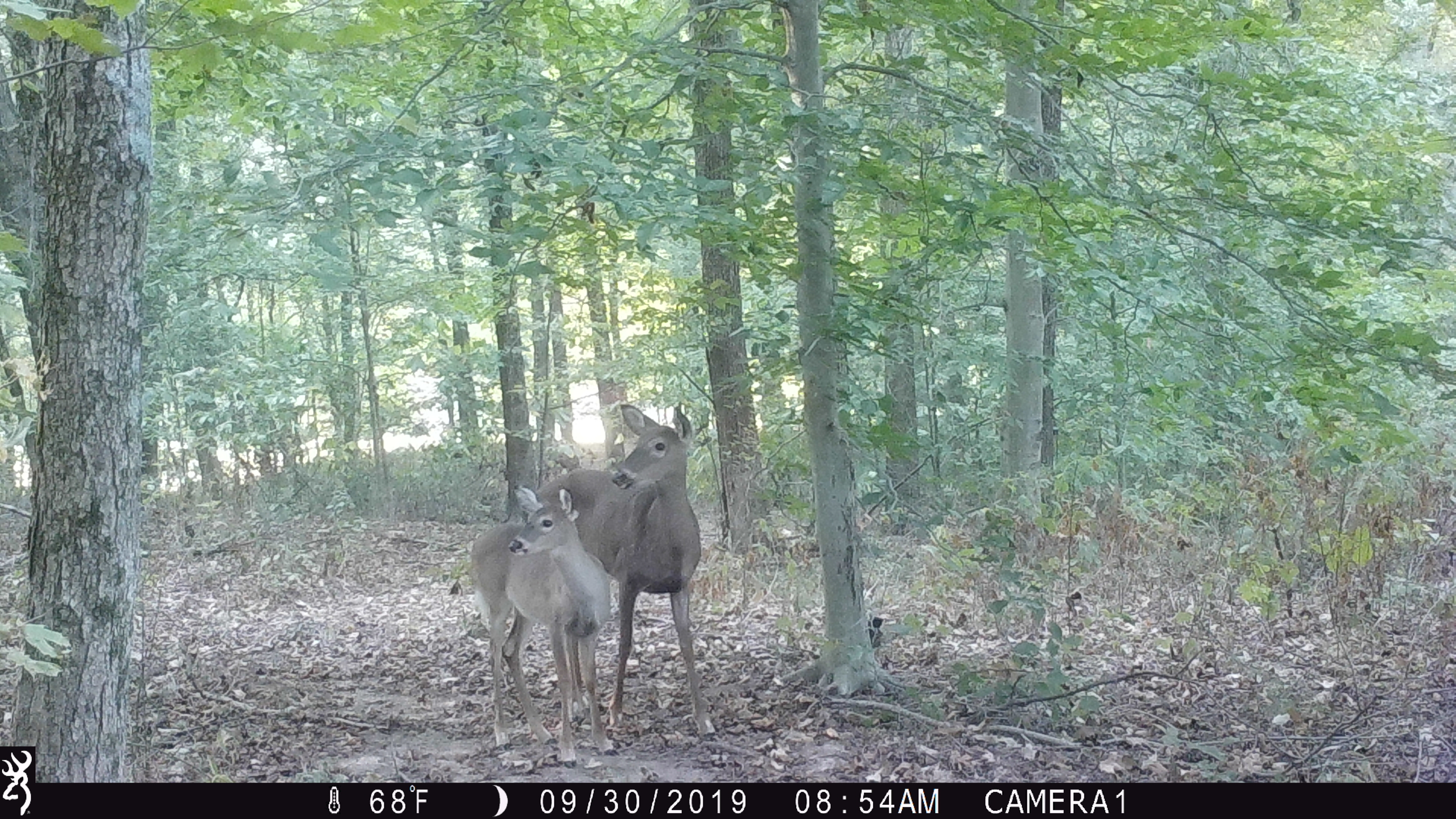Patoka Sportsman 10-12-19
Patoka Sportsman 10-12 & 10-13-19
During deer season, the DNR encourages hunters to stay informed about deer disease and best practices for handling any carcass or other raw meat. Epizootic hemorrhagic disease (EHD) has been confirmed in several central and southern Indiana counties. As a result of the outbreak, county bonus antlerless quotas were reduced to a maximum of two in areas affected by EHD. EHD does not affect humans, and deer infected with EHD is safe to consume. Learn more about EHD.
As the days shorten and the breeding season for deer approaches, the chances of encountering deer on Indiana roadways increases significantly. Motorists should pay particular attention while driving to decrease the risk of collision. Deer-vehicle accidents can be minimized by practicing good defensive driving skills.
Staying aware and keeping the following information in mind can help motorists reduce their chances of becoming another deer-vehicle collision statistic:
- Deer are most active between sunset and sunrise.
- Deer often travel in groups. If you see one deer, another is likely nearby.
- Be especially careful in areas where you have seen deer before.
- Use high beams when there is no opposing traffic. Scan for deer’s illuminated eyes or dark silhouettes along the side of the road.
- If you see a deer, slow your speed drastically, even if it is far away.
- Exercise extreme caution along wooded edges, at hills, and during blind turns.
- Never swerve to avoid hitting a deer. Most serious crashes occur when drivers try to miss a deer, but hit something else.
DNR fisheries biologists have concluded a two-year project designed to improve aquatic habitat in Monroe Lake. About 300 habitat structures were dropped into Monroe Lake in a 17-acre area to provide fish with a place to feed and hide from predators. Current structure locations can be found online. The habitat structures were placed in 7-to-14 feet of water during summer. Four different types of structures were used for the project. Each is designed for different fish species, fish life stages, and water depths.
As crisp autumn air arrives and reminds us that winter is around the corner, it is also a good time for Hoosiers to think about winter habitat for wildlife. Naturally, decaying leaves, grass clippings, and dead wood are great resources for wildlife in winter. As a bonus, broken down plant matter releases valuable nutrients back into the soil.
- Leave fallen leaves alone - Birds such as robins and thrushes seek out insects overwintering in leaves for winter food. Leaves can also serve as insulation and cover for wildlife such as eastern box turtles and red bats, both of which are species of special concern in Indiana.
- Don’t cut back tall wildflower or grass stems - Quail and pheasants, among other wildlife species, can use wildflower or grass stems from the previous growing season as nesting material. These stems also house overwintering pollinators.
- Build brush piles or leave dead trees - Decaying woody vegetation and brush piles can be a great source of winter cover. Standing dead trees, called snags, provide nesting spaces for many birds and mammals. Downed logs can retain heat and moisture in winter months, providing habitat for salamanders and frogs. Brush piles can protect species such as rabbits, snakes, and some birds from harsh winter conditions.
For more information about creating brush piles or other habitat in your back yard, contact your district biologist at wildlife.IN.gov/2716.htm.
Indiana DNR has conducted waterfowl counts during fall and winter migration since 1986. In most areas, counts are performed from the last week of August through January to gather migration data during potential waterfowl hunting seasons. Waterfowl counts occur on several fish & wildlife areas (FWAs), Muscatatuck National Wildlife Refuge, and two southern Indiana rivers.
During the monitoring period, FWA property staff follow a mapped route and record all waterfowl observations once a week. Staff send property data to the waterfowl biologist. The river counts occur on two segments: one in the South Zone and one in the Central Zone. The segments are flown in a helicopter only from November through January because waterfowl usage of the rivers is very low until ponds and marshes begin to freeze.
Three-year averages of data are used to determine when migration occurs in each waterfowl hunting zone. This information helps time hunting season with the likely peak migration each year. In addition, data are posted online to share bird usage at the various participating properties. Waterfowl counts are not a census of all birds in the state at any given time; rather, count data provide an index of migration at the zone scale. Waterfowl usage of individual locations can vary widely depending on many factors.
If you’re an archery hunter you can sign up for the Archer’s Index and report your wildlife observations while afield. You can sign up anytime. Date is collected from Oct. 1 to the day before the firearms season. The data you help collect will be used to create observation trends and calculate fawn/doe and buck/doe ratios. To learn more go to www.on.IN.gov/archersindex. Past data collected is available at www.dnr.in.gov/9812.htm. Coordinator of the Archers Index is Geriann Albers the new Furbearer Biologist with the DNR. She can be reached at [email protected].




